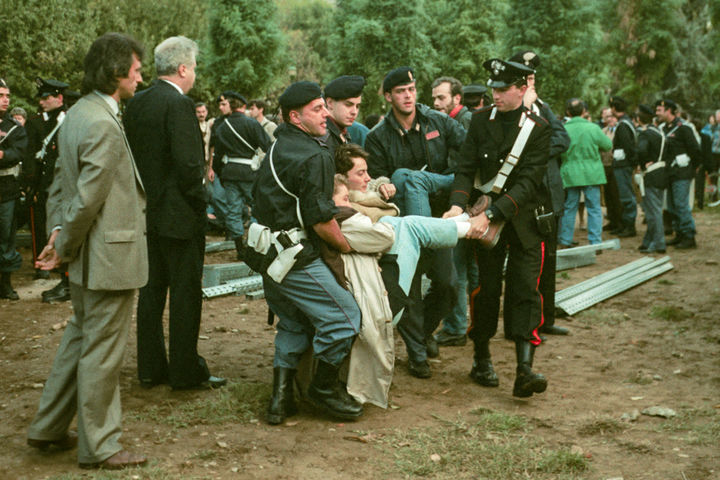Another time, another park
Watching the unfolding of the protests in Istanbul’s Gezi Park, and the extraordinary behavior of the Turkish government, reminded me of another set of protests many years ago.
The context was very similar. Milan’s Parco Pallavicino, a pleasant, leafy park, was due to be torn up to allow development, in this case of an underground parking garage. Arguably, Milan needed additional parking space more than Istanbul needs another shopping mall, and the developers swore up and down that they’d replant the trees when they were done (no one quite believed them). Nonetheless, a protest movement formed and protesters showed up to sit in front of the bulldozers and block the work.
The day of the big standoff, the police turned out in force. Italy’s police forces are somewhat fragmented, so there were at least three forces represented, including the vigili urbani (local police), polizia di stato (state police) and the carabinieri (paramilitary police). As a long line of carabinieri vans drew up, lights flashing, I remember one of my friends muttering nervously “Adesso ci manca solo la guardia di finanza”
(“Now all we’re missing is the tax police”).
For all the show of force, the police action was extraordinarily restrained. The protesters sat down and linked arms. The police came over, grabbed arms and legs, and a human tug of war ensued. Eventually, the police would win and the protester would be picked up, carried a short distance away, and set down on the ground. They would then usually get up and run round to the back of the line, and the whole process would repeat. It wasn’t quite a game, but almost.
A few moments after I took the first of these photos, the cop in the picture decided he didn’t like the attention and marched me over to a plainclothes officer. “He took my picture,”
the cop said. “I was taking a picture of my friend,”
I told him (adding mentally “Not my fault she was being picked up by four cops at the time”
). The plainclothesman took my camera and tried to remove the film but couldn’t figure out how to open the camera. “Here, give me that,”
I said. “I’ll do it.”
and took it back from him. At that moment, someone else came to speak to him. I took advantage of his distraction to simply put the camera back in my pocket and walk away.
There were no arrests. No tear gas or pepper spray. No broken heads or baton charges. When a procession of kids from the local high school showed up, providing a media-friendly spectacle for the late-rising journalists, the police and developers pretty much decided to cut their losses and come back another day. It was a very low-key affair.
Granted, this was Italy, not Turkey. And granted, the protesters were mostly white and middle-class (the Italian cops had been rather less restrained a few months earlier when they had raided a squat occupied by Moroccan immigrants). But the photographs coming out of Istanbul show people not so very different from the protesters of Parco Pallavicino, subjected to the full power of a militarized police force.
The point of all of this - aside from giving me an opportunity to drag out some old photos that I’ve never published before, on a somewhat tenuous pretext - is that I think the Turkish government’s response to the Gezi Park protests is consistent with a pattern that I’m seeing more and more. As police forces become increasingly militarized, responses to peaceful protest become increasingly violent and disproportionate. Ordinary people who take to the streets to protest against what they see as injustice are labeled “terrorists” by those in power. Our elected representatives are often openly contemptuous of those they have been nominally elected to serve. While the extreme arrogance of PM Erdogan’s “damn your eyes” reaction to criticism might be an outlier, it’s not all that different from some of the sentiments expressed by other ‘leaders’ during, for example, protests against G8 and G20 summits.
The trend, if it is one, is paradoxical. Perhaps fearful of world opinion, some autocratic regimes appear to be becoming less heavy-handed. The threatened rulers of the Arab Spring unleashed their share of violence on their opponents, but a decade before those same protests would probably have ended in massacres, not in the fall of governments. It’s the democracies where our leaders seem to feel themselves increasingly unaccountable to ordinary people, increasingly willing to deploy extraordinary force to quell any protest that threatens to disrupt commercial interests or ‘public order’. Our leaders pay lip service to the idea of peaceful protest as a necessary feature of democracy, but their actions tell a different story.
It’s hard to consider this a healthy trend.
